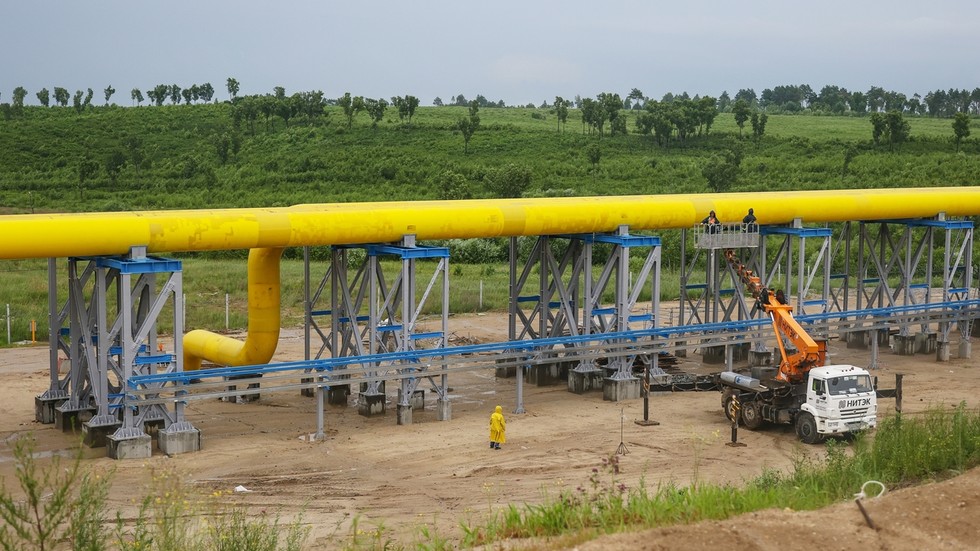
The new route will link the Power of Siberia and Sakhalin-Khabarovsk-Vladivostok gas circuits

Networks of above-ground gas pipelines at the Amur Gas Processing Plant, near the city of Svobodny, Amur Region, Russia, June 13, 2021. © Sputnik / Pavel Lvov
Russian energy giant Gazprom has begun work aimed at linking the country’s gas pipelines into a nationwide gas transportation system, the company announced on its official Telegram channel on Thursday.
According to the announcement, the company launched construction of the 800km Belogorsk-Khabarovsk section of a new pipeline in Russia’s Far East, which will eventually connect the Power of Siberia and the Sakhalin-Khabarovsk-Vladivostok gas routes.
The pipeline will be integrated in what is called the Eastern Gas Supply System, to which Gazprom plans to link existing gas infrastructure in the Western part of the country.
“This will provide additional reliability and flexibility of gas supplies to domestic consumers and will open up new opportunities for the gasification of the regions of Siberia and the Far East,” the company said.
Apart from domestic supplies, the Power of Siberia pipeline provides Russian gas to China under a 30-year agreement. Linking the pipeline with the shelf off Sakhalin Island, a major source of gas, could allow Russia to further boost gas exports to China.
Last November, China National Petroleum Corporation (CNPC) Vice President Xie Jun revealed that it was already working with Gazprom on the Far Eastern route project, which involves constructing a cross-border section across the Ussuri River between the Sakhalin-Khabarovsk-Vladivostok pipeline and the Chinese city of Hulin.
READ MORE: Russia’s planned gas pipeline to China hit by delay – Mongolian PM
Gazprom has also been planning to supply gas to China via the new Power of Siberia 2 pipeline through Mongolia. The conduit is expected to allow for the delivery of up to 50 billion cubic meters of gas annually, sourcing natural gas from Russia’s Yamal Peninsula, which, prior to the Ukraine conflict and ensuing sanctions against Moscow, served the EU market.
However, in January, reports emerged that construction of the pipeline is expected to be postponed, as Beijing and Moscow need more time to conduct economic studies on the project.




